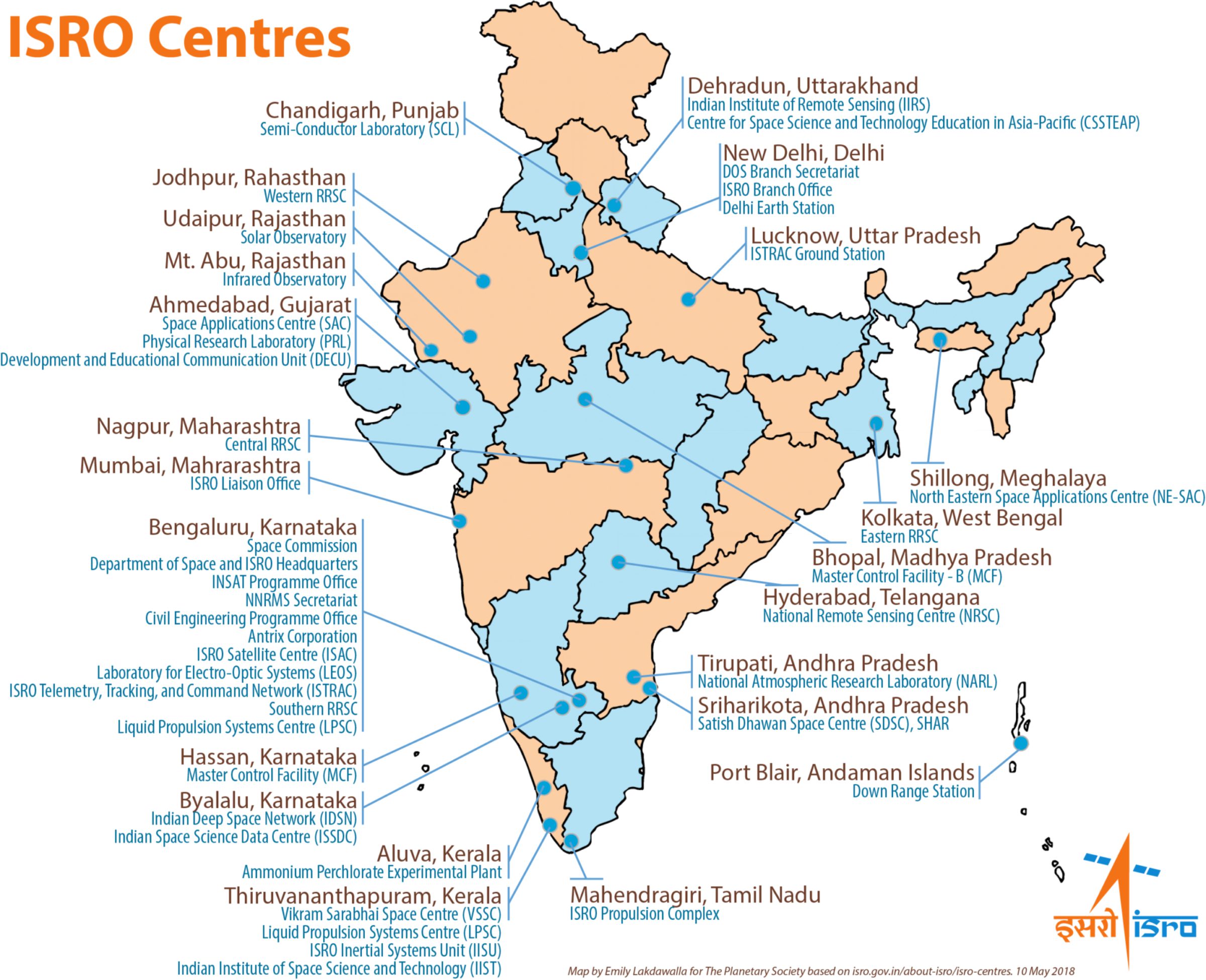Sandhya Ramesh • May 15, 2018
Fire at ISRO's Space Application Centre
Two weeks ago, Indian media reported a fire at the Space Application Centre (SAC) of ISRO in the city of Ahmedabad, Gujarat. The fire broke out at approximately 1:30pm on the afternoon of the 2nd of May, in the antenna testing laboratory. Although it escalated rapidly and was reported as having been a big fire, there were no casualties or damage to spacecraft. The cause of the fire is not yet established fully and a forensic investigation is underway.
The SAC is one of ISRO’s numerous centers spread out across 23 cities. At SAC, satellite payloads and components are manufactured, tested, and integrated. These include the ones that went up in Chandrayaan-1 and Mars Orbiter Mission, and also the ones that will go in the upcoming Chandrayaan-2. The campus holds testing and integration labs, and fabrication facilities.

A source in ISRO who wishes to remain anonymous provided a few further details. The fire broke out in an isolated research building currently not in use due to ongoing renovation. The source of the fire was reportedly a “short circuit” in a testing facility. Large amounts of polyurethane lining on the walls, possibly used for insulation purposes, led to the flames growing quickly. A shared central air conditioning vent enabled the fire to spread to a neighboring room. However, the fire was confined to just the one facility within the building.
Called in to douse the flames and mitigate damage were 25 fire engines and 10 ambulances, along with personnel from the Central Industrial Security Force (CSIF). The CSIF paramilitary forces guard and protect central government buildings, sensitive government locations, scientific and nuclear facilities, Currency Note Presses, and all of India’s airports. The fire took two hours to put out, during which time the entire campus was sealed to outsiders and media.
The fire services have maintained that the cause of the fire is not yet known beyond just a short circuit. ISRO concurs; the spokesperson confirmed that there have been no findings yet into what caused it. Some “specialised equipment” seems to have been damaged, but no flight hardware.
Fire department officers at the scene mentioned that it was a stroke of luck that most employees who normally occupied the building (during the renovation process, presumably) had been out for lunch. Only one CSIF member trying to put out the fire was hospitalized, for smoke inhalation. Several insiders have mentioned that measures are being taken to strengthen the fire alarm and warning systems. The ongoing forensic investigation is also looking into the possibility of foul play as a matter of course.
Although events are rare across ISRO’s campuses, there have been other notable fires. The Solid Propellant Booster Plant (SPBP) in Sriharikota, where the two ISRO launchpads sit, has seen its fair share of incidents. Waste solid propellant caused two small fires in February and September of last year. A minor fire there in 2015 injured two people. The Sounding Rocket Complex in the same town also had a fire in 2016, injuring two employees.
The SAC itself has seen fire before. In October of 2015, yet another short circuit — which is possibly just a blanket cause given by the agency for all fire-related incidents — caused a fire in a testing facility for camera lenses. ISRO’s most serious accident was 14 years ago, in 2004, when a large explosion during the moving of some solid propellant caused the deaths of six people.


 Explore Worlds
Explore Worlds Find Life
Find Life Defend Earth
Defend Earth

